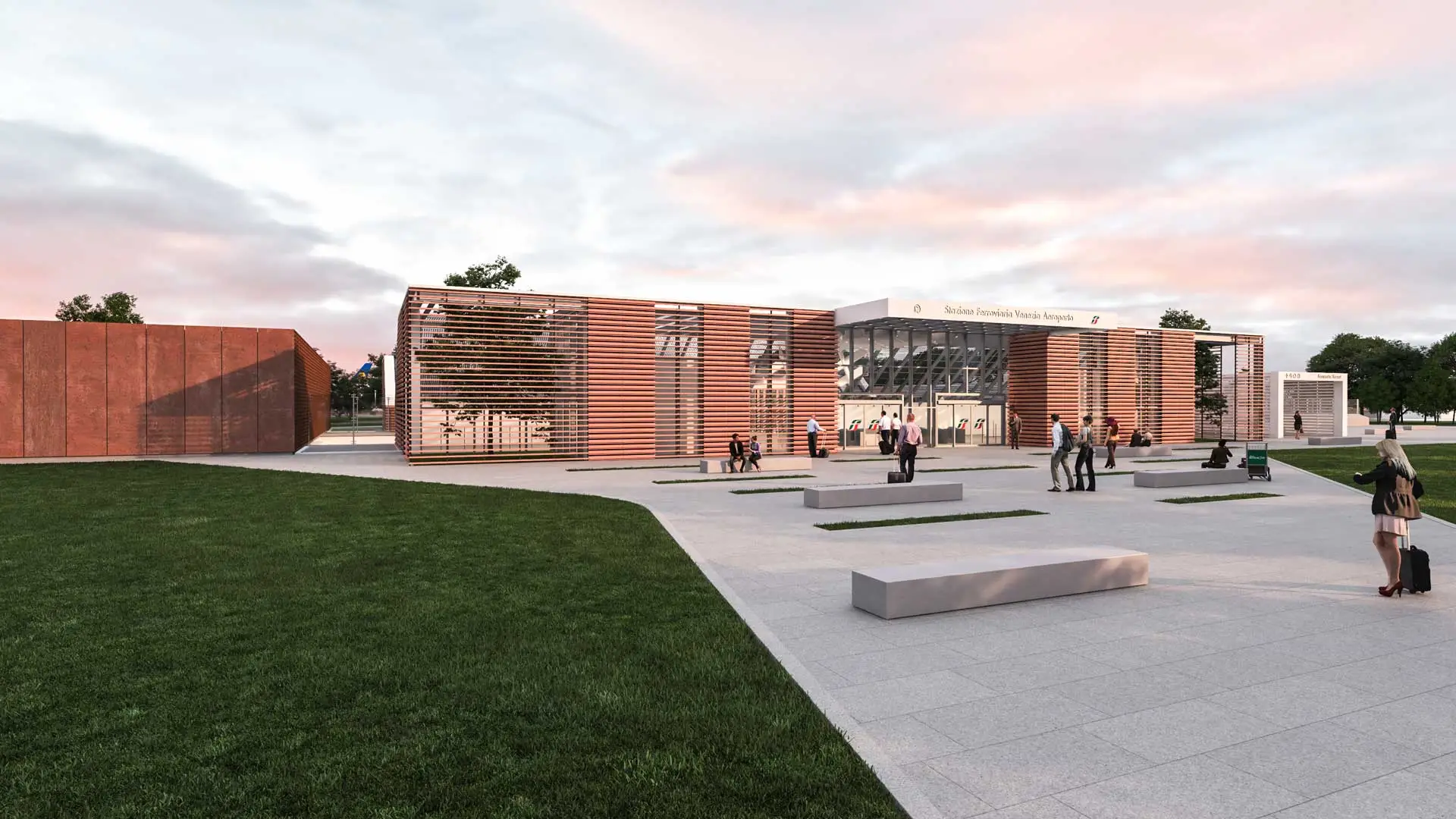The objective of the project is to create an intermodal link between the Marco Polo Airport and the existing Venice-Trieste railway network, in line with the European directives aimed at increasing rail transport and the strategic development lines defined by the Ministry of Infrastructure and Transport, which have identified Venice as one of the airports of national interest for which accessibility and intermodality must be strengthened.
The Project involves the construction of a new section of AC line. 8 km that, starting from the junction with the historical Venice-Trieste line, consists of an initial double-track section that runs mainly uncovered in close proximity to the A27 motorway link road, while near the airport it becomes single-track in order to create the ‘loop’ configuration that provides a single through track and a passing track at the new airport station. The connection with the historic line is double-track on the Venice side and single-track on the Trieste side, with turnouts that can be travelled at 60 km/h.
The new link can be used by both long-distance and shuttle-type regional trains, being functional to the needs of the S.F.M.R.
Group
Manelli Impresa S.p.A. is a leading company in the construction of public, commercial and industrial buildings.
PROFILE
CORPORATE RESOURCES
Projects
Innovative and sustainable projects that improve the world around us.
Highlighted projects
Mantua Hub
Trenitalia S.p.A – IMC Bologna
Railway station of the HS/HC ‘Terzo Valico dei Giovi’ section
Creation of new CIMEC workshops
Governance
Our governance reflects the core values upon which our company is built and the practices we adopt to ensure the success and protection of the interests of all our stakeholders.
Business Areas
Skills, innovation and sustainability are indispensable ingredients for achieving results in our business areas: Infrastructure, Public Building and Private Construction.
Sustainability
Environmental sustainability and land preservation.
Careers
Join our team and inspire others with your professionalism.














